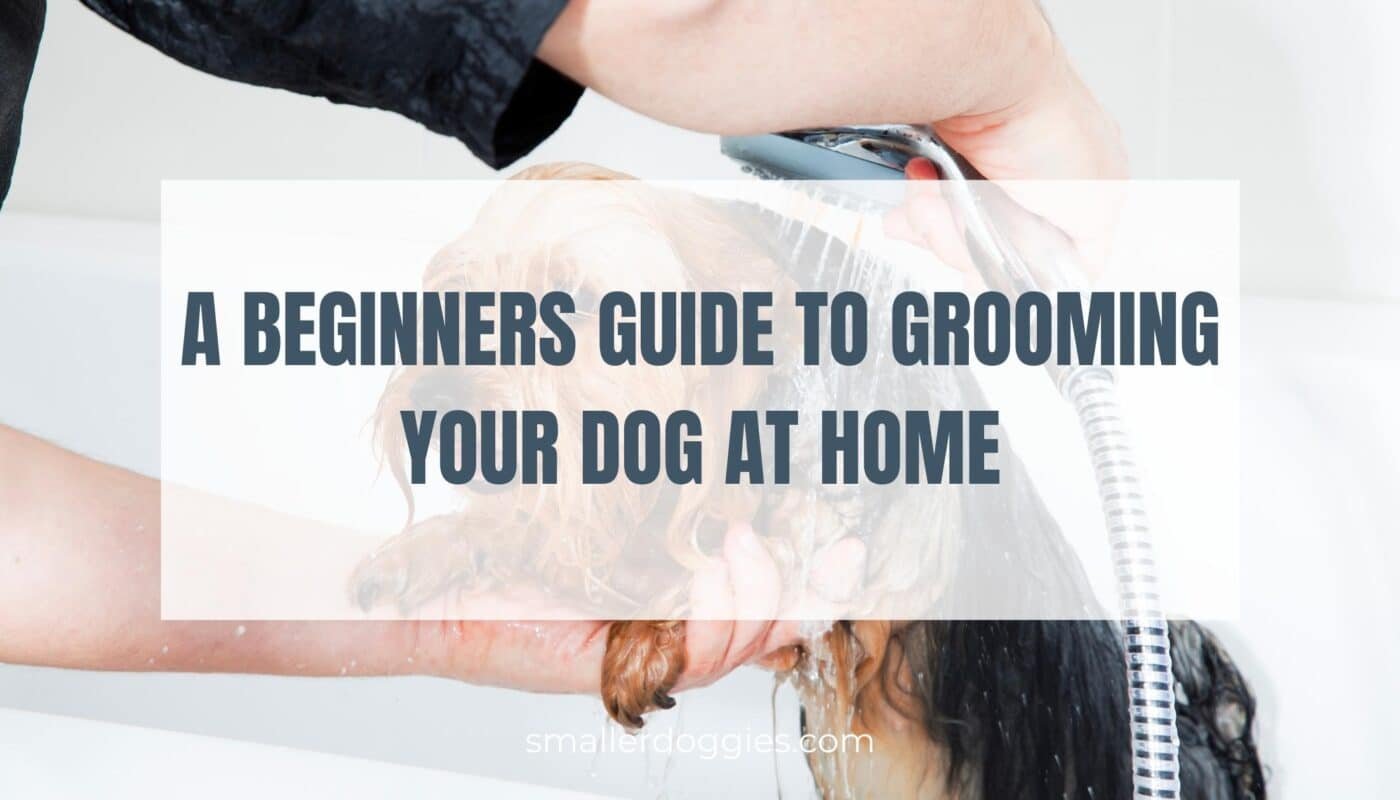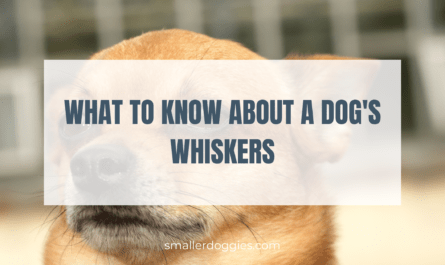Post Disclaimer
This post may contain affiliate links. If you use these links to buy something we earn a commission at no extra cost to you. Smaller Doggies is supported by its audience, Thank you!
If you are the proud owner of a dog, you will know how important it is to keep them well-groomed. Depending on your current situation, It may be hard to find time to take your dog for a grooming appointment, or be too expensive.
You have thought about grooming your dog at home but are unsure where to start and what equipment you may need? The good thing is that you will more than likely have some of the equipment already at home.
Whether you’re a beginner just looking for some pointers on grooming your dog at home or want to learn some tips and tricks that will make the whole process easier, this article is for you! We’ll go over the basics you will need to groom your dog at home and an essential step-by-step process.
Items you will need when grooming your dog at home.
One of the most important things you will need when grooming your dog at home is the right tools. Depending on what type of coat your dog has. You may already have some of these items at home.
(We have also added affiliate links to some of our favorite products that we use, if you make a purchase, we earn a commission at no additional cost to you, thank you.)
- Dog Brushes
- Dog Clippers
- Thinning shears (optional)
- Scissors (Blunt-nosed safety is preferred)
- Bathtub/Dog tub
- Non-slip mats (optional)
- Hose/shower head attachment.
- Face cloth for wiping dog face
- Towels (super absorbent)
Ask your veterinarian or groomer for advice if you’re unsure what to use for your dog’s coat.
Steps to Grooming your Dog
Step 1: Brush your dog
Give your dog a brush before bath time. This will help remove fur and brush out any matted areas. Make sure you have something to put all the fur into to dispose of the fur easily. There are a few brushes to use for different coats, so it’s important to know what kind of fur you’re dealing with to get the right brush. Make sure to check for matted fur between your dog’s paws.
Step 2: Bathe Your Dog
Bathing your dog often is an essential part of grooming them. It will help keep their coat clean and healthy, but it will also help you identify any skin problems early. If your dog enjoys having baths, it’s also an excellent bonding time for you.
Water temperature will need to be lukewarm, and make sure not to hose the head. Instead, you can use a damp face cloth to wipe the face area, making sure to brush under the eye area, don’t use shampoo on the face cloth; just use lukewarm water.
There are many different dog shampoos available. Only use dog shampoo as it is formulated specifically for dogs, don’t use shampoo designed for people. If you want to give your dog the whole grooming experience, you can even use some dog conditioners but not necessary.
When you are ready to dry your dog, using a super absorbent towel will make life easier, your dog might have other ideas and want to run away and shake; try to dry the fur as much as possible. You can use a hairdryer to help speed up the process. Make sure hair dryer temperature settings are not too hot and don’t get too close as you will burn the skin.
Some dogs will hate the hairdryer, so you may be only able to use a towel. If your dog is likely to shake, it may be an idea to take them outside to shake off.
Step 3 Clippers!
Body / Legs
Time to clip the fur on the body! Use the clippers on the body only, not the head. You want to go in the direction as the hair grows, not against it, making sure that your dog is standing still and calm. If this is something new to your dog, it may take a few tries until your dog is comfortable enough for you to use the clippers.
Face
When it’s time to groom your dog’s face, you want to take your time and be gentle; having blunt-nosed safety scissors in your grooming kit will be very useful! Gently brush out the hair on your dog’s face and give it a trim. You can try using a small comb to brush out the fur on the front. Don’t cut too short; take little bits off at a time to ensure you don’t cut off too much. Using thinning shears will give the fur a more blended look than a blunt-cut look.
Go slow; you are cutting in a delicate area; remember they have whiskers, do not cut their whiskers. When in doubt, a great rule to stick by is don’t do it! This is also a great time to check the health of your dog’s ears. You will be looking for any redness, dirt, and mites.
Step 4: Cutting the nails!
One of the most dreaded tasks of dog grooming is clipping your dog’s nails. It can be a little scary if you’ve never done it before, but it can be easy with practice! Here are some tips to help make the process easier:
1. Start slow. If this is your first time clipping your dog’s nails, it may be painful for them. Start slow and don’t clip too much at a time to prevent injury.
2. Use dog nail clippers or dog trimmers designed specifically for dogs. Using regular scissors is not recommended as they are sharp and can cause damage if you’re not careful!
3. It’s vital not to trim too short as this can cause bleeding and pain.
FAQ
Do you bathe a dog before or after grooming?
Some people bathe their dogs before grooming, and some wash their dogs after grooming. Whatever way you choose to do it, we recommend brushing your dog first to get all the excess fur out before bathing. Wash the dog to get all the dirt out and then clip them where needed. You will also be able to see if you need to trim their fur around the face.
Conclusion
We hope you’ve enjoyed this post! Grooming your dog at home can save you time and money. It’s a great way to bond with your furry friend. With a bit of practice, anyone can do it!
Thanks for reading!
What are your views on this? Share in the comments bar below.







